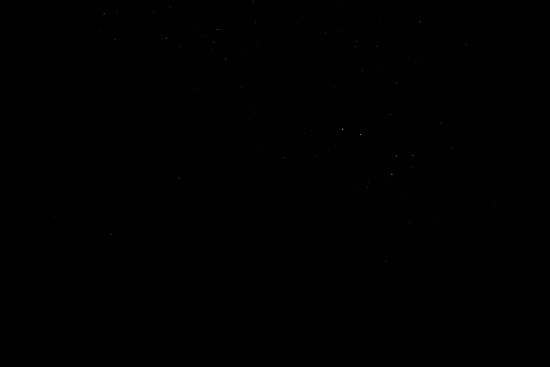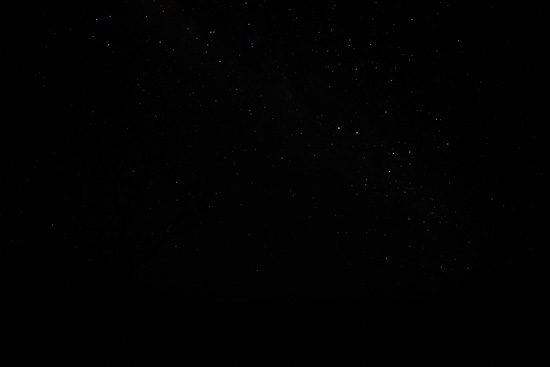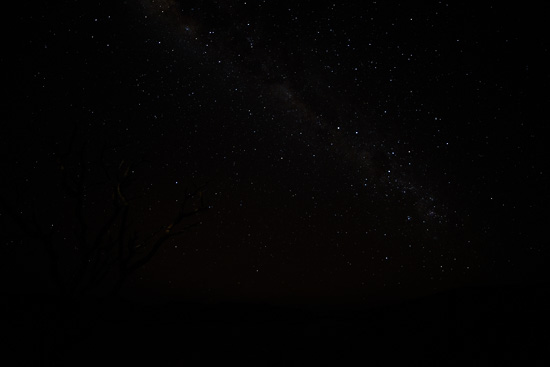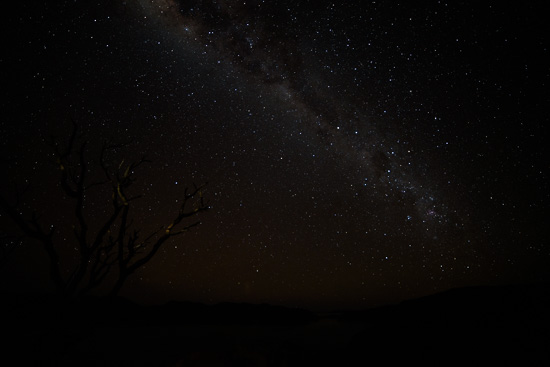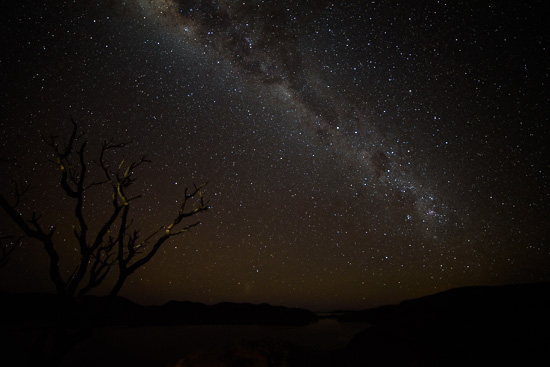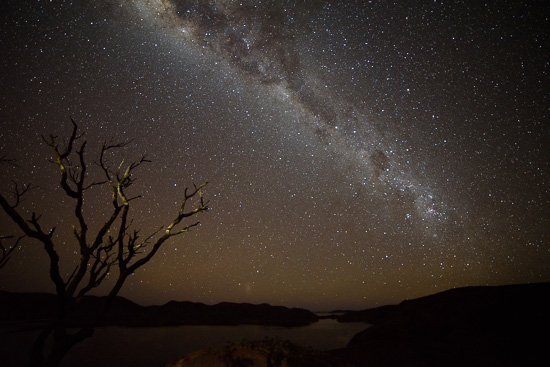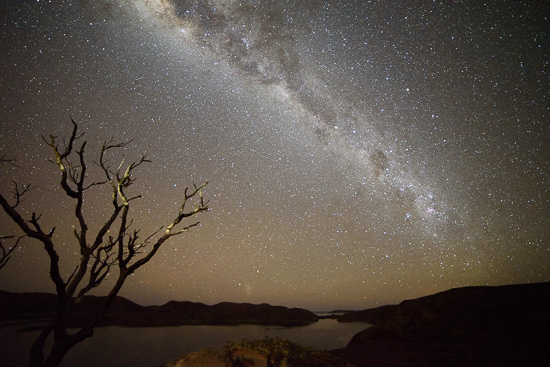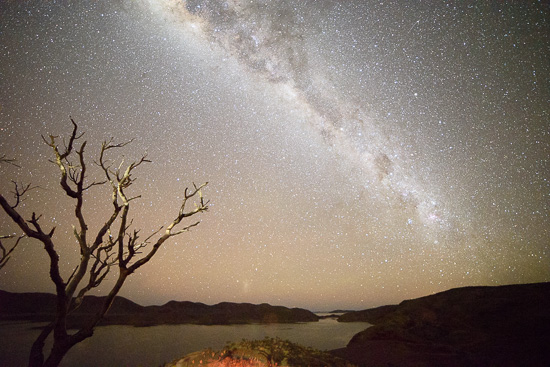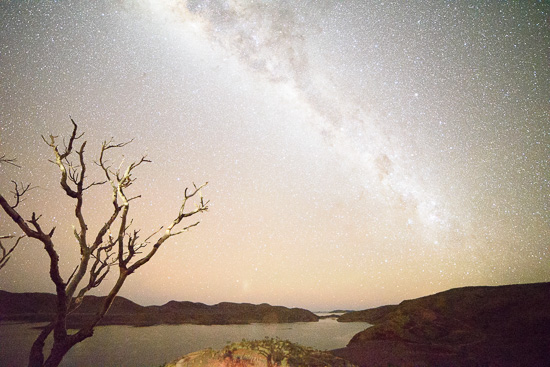High ISO Testing – Take One…
by Rodney Campbell on Sep.07, 2015, under Life, Photography
Whilst I was up on the bluff overlooking lake argyle taking shots of the Milky Way I figured I’d take some high ISO test shots for instructive purposes both for my Arcanum cohort and the general photography community.
Some folks must wonder why they can’t take decent shots of the Milky Way with their point and shoot or phone cameras.
Besides requiring the appropriate natural conditions – dark skies (no or little moon (less than a quarter), away from light polluting cities and towns), clear skies (no clouds).
For really good static starry skies images you need to be using fast wide aperture lenses which allow lots of light in (e.g. f/2.8 or faster) and also the ability to shoot longer exposures (either by using a very wide angle of view to cut down on he effects of the movement of the stars or a motion tracking unit).
Lastly it is the high ISO performance of your sensor which completes the exposure puzzle in allowing enough sensitivity to the very faint light of the faintest stars which allows you to capture more star filled scenes of the night sky.
For the shots below I’ve taken these shots with the same camera, lens and framing. I have also used the same aperture (f/2.8) and shutter speed (30 seconds) and have just varied the ISO setting to give you a feel for what the resultant shot of the Milky Way will look like at various ISO settings.
These images are straight out of camera with just the white balance set so they are all the same.
Note: These photographs (especially the wider shots) look much better when larger – so click any of the images below to see larger versions in an inline overlay slideshow gallery viewer.
ISO 100 – just to give you a base reference – as you can see only the very brightest few stars are visible.
ISO 400 – this is probably the peak usable ISO available on most point and shoot cameras.
ISO 800
ISO 1600
ISO 3200 – this is probably the starting point for a good spread of stars shot under good conditions (using 30 seconds @ f/2.8).
ISO 6400 – this is likely around my ideal target under good conditions (using 30 seconds @ f/2.8).
ISO 12800 – this is surprisingly good under good conditions (using 30 seconds @ f/2.8) and seeing this shot out in the field made me rethink my use of ISO’s above 6400 for Milky Way shots. Following this I started experimenting with ISO’s in the 5000 to 10000 range for night shoots.
ISO 25600 – using the first of the extended ISO ranges on the D750 (Hi1) has definitely brightened the sky but has also increased the background ambient and the background noise and the stars have lost their contrast against the sky.
ISO 51200 – the second extended (Hi2) and maximum ISO capability of the D750. Way too bright overall and quite noisy but remarkable none the less.
